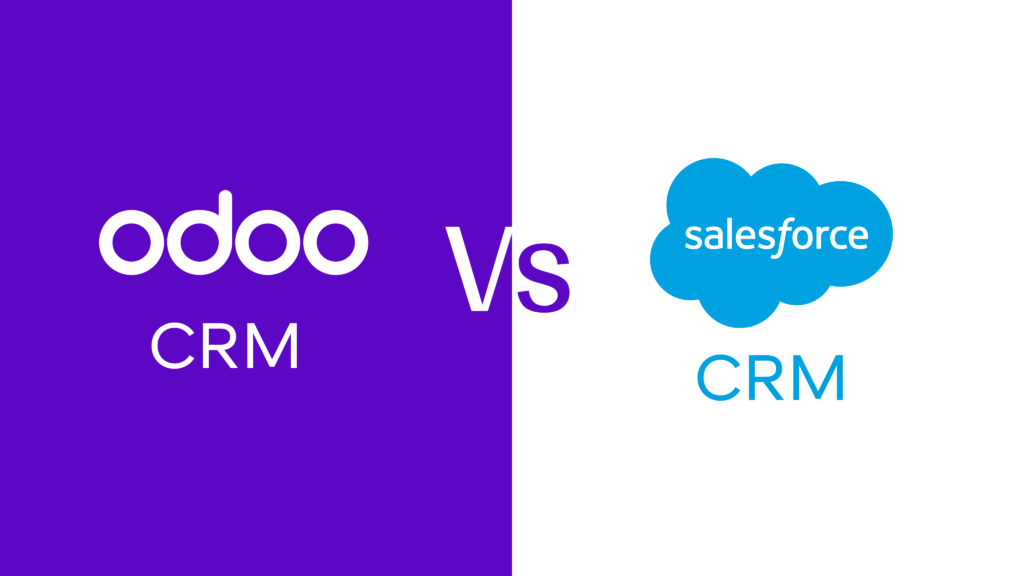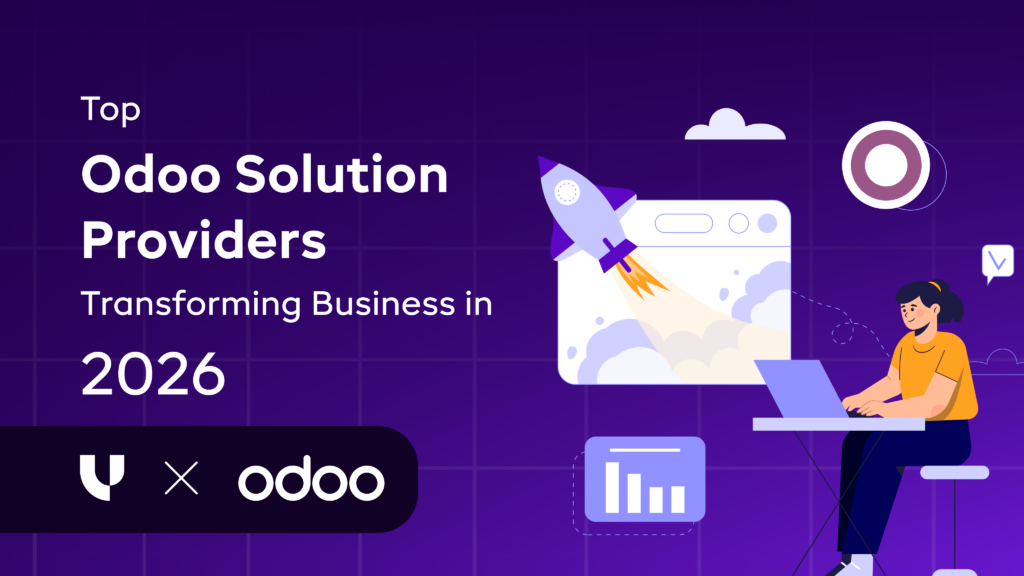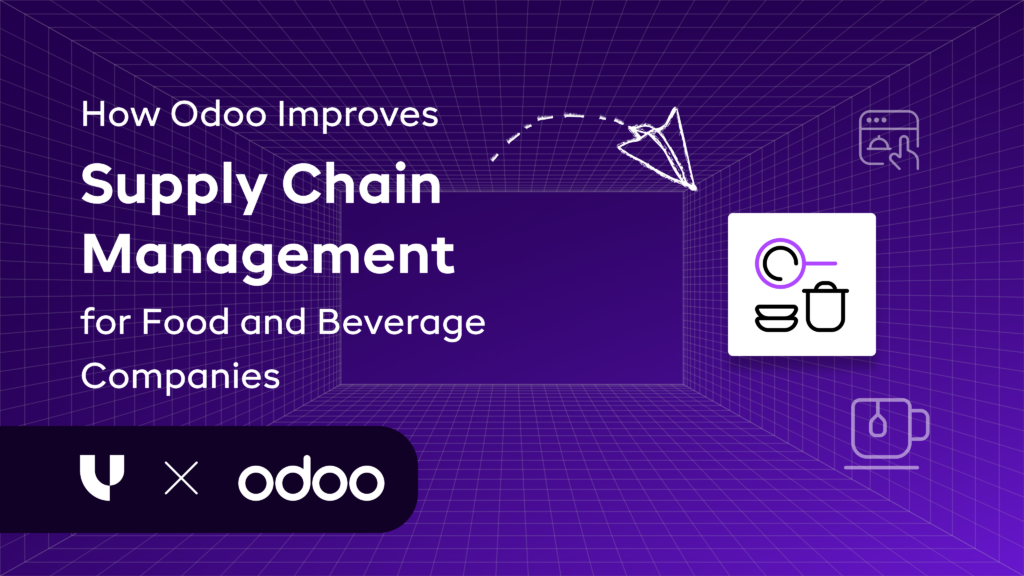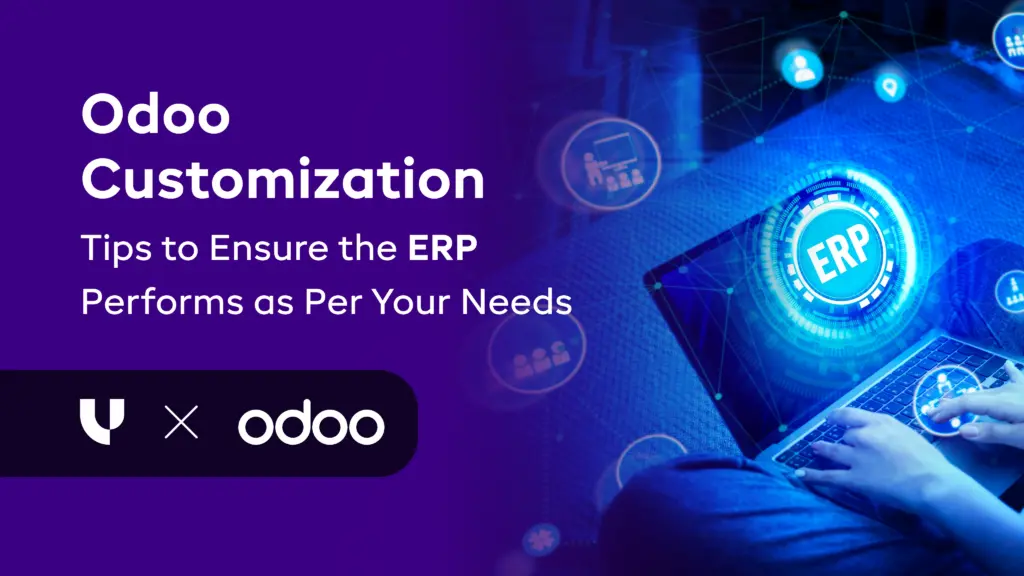Odoo vs Salesforce: Choose the right CRM for your business in 2025
Published on August 4th 2025

Introduction
The right CRM choice isn’t about features, it's about the right fit.
Choosing the right CRM isn’t about stacking up features. It’s about finding the right fit for your business.
When it comes to choosing between Odoo and Salesforce, the real question isn’t “Which one is better?” but “Which one matches the way your business operates today, and what are your business goals for tomorrow?”
If you’re reading this, you’re likely in one of two situations:
- You’re scaling quickly and need a CRM that fits your budget without locking you in enterprise-level complexity.
- Or you’re part of a larger organization where compliance, scalability, and vendor-backed support are non-negotiable.
This guide is built to give you clarity, not another feature dump. We’ll break down how each platform performs in real-world scenarios, where they differ, and what type of business each one is best suited for. So you can choose one of the CRMs and move forward with confidence, not guesswork.
Odoo CRM: Flexibility that fits your existing workflows
Odoo CRM is part of the broader Odoo ERP platform, frequently used in phased Odoo implementation projects designed for adaptable, growing organizations. Its open-source, modular design makes it easy to integrate with your existing tools and customize around your workflows, so you stay in control while scaling at your own pace.
Why does Odoo work well for growing businesses?
Effortless integration
Odoo’s modular setup allows you to add or remove features as business needs evolve, a flexibility showcased in our blog on how to connect Odoo with favorite tools seamlessly.User-friendly interface
Its clean design reduces the learning curve for teams. This simplicity translates into smoother HR and onboarding experiences, as detailed in our Odoo HRMS and employee engagement guide.Budget-friendly scalability
Open-source flexibility means you can start small and expand without the heavy upfront investment required by enterprise-first platforms.Ideal for lean IT teams
With straightforward configuration and minimal technical overhead, Odoo is perfect for businesses with limited IT resources.
What businesses need to be prepared for?
While Odoo offers unmatched flexibility, it works best for businesses that are ready to manage it strategically. To get the most out of the platform, you’ll need either:
- An experienced internal IT team to handle customizations and ensure seamless and smooth upgrades, or
- A skilled implementation partner who can upgrade strategically in phases and align with your workflows.
Without the right expertise, unnecessary complexity can creep in over time.
In short, Odoo is ideal for businesses that want a CRM their team can truly shape around their way of working, and are prepared to invest in the right implementation support to keep it running seamlessly.
Salesforce CRM: Enterprise-grade CRM with fewer limitations and extensive customization options
Salesforce has set the standard for enterprise CRM. It’s built for scale, supported by a global partner ecosystem, and equipped with every compliance, governance, and security feature that large organizations need to operate.
Why does Salesforce work well for larger organizations?
Built for enterprise scale
Salesforce is built to support everything from a single sales team to global, multi-division enterprises. You won’t need to “re-platform” as you grow. Its architecture is designed for seamless scalability.Infrastructure that grows with you
With its cloud-based platform, robust API ecosystem, and extensive AppExchange marketplace, Salesforce makes it easy to expand functionality without hitting technical roadblocks.AI-driven automation and analytics
From AI-powered insights to customizable dashboards and workflow automation, Salesforce enables large organizations to unify data, accelerate decision-making, and improve operational efficiency at scale.Enterprise-grade governance and compliance
Salesforce delivers advanced security, compliance controls, and role-based access management, ensuring that even the most complex organizations stay secure and audit-ready from day one.Continuous platform innovation
Providers within the Salesforce consulting ecosystem ensure platform updates, certifications, and partner alignment keep the system evolving with enterprise needs.
What businesses need to be prepared for?
While Salesforce offers a unified, enterprise-grade CRM platform, it requires a level of commitment and organizational readiness to make it valuable for your organization.
- Strategic alignment: Adopting Salesforce works best when teams are prepared to centralize processes and data under one platform, driving consistency across the organization.
- Dedicated expertise: Most deployments require certified Salesforce admins or external consultants to fully leverage the platform’s capabilities and ensure the platform is configured and optimized for complex business needs.
In short, Salesforce is ideal for organizations that need a CRM with enterprise-grade compliance, governance, and scalability, out of the box, and are ready to invest in a platform built to support long-term growth.
Odoo CRM vs Salesforce CRM: A practical, quick decision-making framework for businesses in 2025
| Factor | Odoo CRM Best Fit | Salesforce CRM Best Fit | Why does it matter? |
|---|---|---|---|
| Business Stage | Early to mid-scale (10–200 users) | Enterprises (200+ users) | This aligns cost and complexity based on your current business stage and scale. |
| Primary Need | ERP-driven workflows (CRM + Inventory + Finance) | Advanced sales enablement and automation | Ensures the platform aligns with core business drivers, not just features. |
| Customization | High (Open-source) | Medium (Configurable and vendor-controlled) | Determines how much control your team has vs vendor lock-in. |
| Total Cost of Ownership (TCO over 3–5 years) | Low | High | Impacts budget planning and long-term scalability. |
| ROI | Faster break-even due to lower cost and ERP value | Higher upfront cost but stronger ROI for mature sales organizations | Helps justify investment based on payback period and revenue impact. |
| Scalability | Modular – Add apps as your organization grows | Already enterprise-ready | Influences long-term platform fit as teams and processes expand. |
| Ecosystem and Integrations | ERP-First Ecosystem | Largest CRM App Marketplace (AppExchange) | Defines how easily you can integrate marketing, compliance tools, analytics, etc. |
| Automation & AI | Basic automation, but extensible via a developer | Advanced AI (Einstein) and enterprise automation | Affects sales efficiency and forecasting accuracy at scale. |
| Compliance & Governance | Basic Controls | Enterprise-grade (HIPAA, FISMA, sandbox environments) | Critical for regulated industries. |
| Implementation Speed | Faster for ERP-centric workflows | Slower, but highly structured enterprise rollout | Impacts time-to-value and change management. |
| Team Training | Minimum training is required; easier for non-sales users to adopt | Required Salesforce admins for ongoing enablement | Affects internal adoption and hiring needs. |
| Brand & Trust | Popular among cost-conscious SMBs and ERP users | Enterprise-grade reputation | Reduces risk in board-level decision-making. |
Want to start a project with us?
Empowering businesses to achieve greatness through strategic guidance and innovative solutions.
Book A Demo
What’s Next: From Decision to Deployment
By now, you would have likely identified which CRM aligns best with your business. The next step is moving from “decision” to “deployment” with clarity and structure.
Here’s how we recommend you approach the transition:
1. Define success metrics upfront
Whether it’s improving lead conversion rates, shortening sales cycles, or improving reporting visibility, establish clear KPIs for your CRM implementation.
Why it matters: This step ensures your implementation is outcome-driven, not just feature-driven.
2. Map your processes to the platform
Document your current sales, service, and operational workflows. Identify where the CRM will replace, refine, or automate existing steps.
Why it matters: A successful CRM deployment isn’t about “fitting in” to the software. It’s about aligning the software with the way your teams work.
3. Select the right implementation partner
Whether you’ve chosen Odoo or Salesforce, the right partner is critical. For Odoo, this often means a partner experienced in modular deployments. For Salesforce, it’s about certified consultants who understand enterprise-scale configuration.
Why it matters: The right partner prevents scope creep, accelerates time-to-value, and ensures your CRM is built for scale from day one.
4. Phase your rollout strategically
We recommend starting with high-impact teams or modules (like sales pipeline management) and expanding gradually into other areas such as service, analytics, or integrations.
Why it matters: Phased rollouts reduce disruption and build internal adoption step by step.
5. Invest in training and change management
Even the best CRM fails without adoption. Build a structured onboarding program for your teams, backed by clear documentation and ongoing training.
Why it matters: CRM success depends on people, not just the platform.
6. Establish a governance framework
Whether it’s an IT lead for Odoo customizations or a Salesforce admin for enterprise governance, define who owns the CRM internally.
Why it matters: Strong ownership keeps your CRM optimized and prevents “configuration drift” over time.
7. Monitor, optimize, and scale
Once live, track your success metrics and refine your setup. Add modules, automation, or integrations in line with evolving business needs.
Why it matters: A CRM is not a one-time project. It’s a platform for continuous growth.
Ready to move from decision to action?
Choosing between Odoo CRM and Salesforce CRM isn’t the finish line. It’s the starting point.
The difference between a platform that drives ROI and one that adds complexity comes down to how the platform is implemented, governed, and evolved to match your business goals.
In one of our recent engagements with a UAE-based fiber optics brand, a structured rollout, backed by a clear governance framework, delivered a 78.5% increase in revenue in a short period. This outcome wasn’t the result of “more features.” It was the result of aligning the right platform with the right implementation strategy.
We’ve seen this pattern repeat across industries; when businesses partner with the right CRM implementation partner, they move beyond software adoption, and the results compound. The right approach turns technology into a growth engine, minimizes risk, and creates a foundation that scales with your business.
If you’re ready to move from the Salesforce vs Odoo decision to results, the next step is clear:
Translate your CRM choice into a deployment strategy designed for business impact.
FAQs - Your most pressing CRM questions, answered!
Q. Is Odoo CRM suitable for enterprise-level businesses, or is it only for SMBs?
An essential component of DevOps automation is orchestration. To ensure seamless and effective execution, it entails organizing and ordering different workflow activities, tools, and systems. By controlling dependencies, parallelism, and error handling, orchestration tools in the DevOps environment enable the automation of complex operations.
They guarantee the coordination of the many phases of the DevOps lifecycle, including as development, testing, and deployment. Tools for orchestration, such as ActiveBatch, facilitate process optimization, resource allocation, and end-to-end visibility into automated workflows.
Q. Do I need a CRM implementation partner for Odoo or Salesforce?
Yes, especially if you’re aiming for a smooth rollout and long-term scalability. For Odoo, an experienced partner helps with modular deployments, upgrades, and customizations. For Salesforce, certified consultants ensure enterprise configurations, governance, and process alignment are executed properly. The right CRM implementation partner can reduce risk and accelerate time-to-value.
Q. How long does it take to implement Odoo CRM vs Salesforce CRM?
Odoo CRM implementations are typically faster, especially for businesses that need ERP-centric workflows and fewer compliance requirements. Salesforce implementations take longer because they involve more structured governance, integrations, and enterprise-level security setups. A phased rollout strategy can optimize timelines for both.
Q. Can I switch from Odoo to Salesforce CRM (and vice versa) later?
Yes, but migrations between CRM platforms require planning. Data migration, process re-mapping, and retraining teams can add complexity. This is why choosing the right platform upfront and aligning it with your growth stage is critical to avoid unnecessary re-platforming in the future.
Q. What are the common mistakes businesses make when deploying a CRM, and how can they be avoided?
Common mistakes include:
- Skipping upfront process mapping
- Businesses often prioritize “getting the tool live” over aligning it with their processes.
- Underestimating change management
- Over-customizing too early
As our founder shared in this post on Odoo customization vs. over-customization, it is clear that the key to success is phased, outcome-driven deployment, and not turning the CRM into a one-size-fits-all platform.
When businesses avoid these pitfalls, CRM implementation shifts from a one-time rollout to a sustainable framework for growth.

About Author


